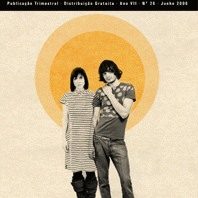interview: Raquel Pinheiro; photos: Matthew Ellery; Ayahuasca stills: Cornelius Delaney
In these five questions Australian guitarist, musician and songwriter Ed Clayton-Jones and I speak about his new solo album Interloper and The Wreckery that released their first album in thirty years, in 2024. We also spoke about the differences of creating as a band and solo, changes in songwriter over the years, the physically of playing guitar, and differences in approach the guitar and the bass.
Ed Clayton-Jones has a career spanning several decades. Other than The Wreckery he have been part of Nick Cave & The Bad Seeds, The Fabulous Marquises, Plays with Marionetter, Noah Taylor and the Sloppy Boys. Ed’s first album, Jackdaw, was released in 2021.
Ed is playing a show on Valentine’s Day, February 14th, at Darling Nikki’s, St Peters, Sydney. The evening comprises songs from the last 30 years of his career. Ed is accompanied by old friends James McNabb too (bass) and Barton Price (drums), and special guests Justine Wahlin and Last Motel. add on: Valentine’s Day concert was cancelled due to venue roof issues
01 – How does your creative process differ if composing for a solo album or for a The Wreckery one?
The answer is that it’s a lot easier composing for solo projects than for the Wreckery. There were two other writers to work with which is cool, I enjoy collaborating with Hugo Race and Nick Barker but one often has to compromise.
I rarely get to sit down and work on songs with other writers. It’s not like I don’t want to, It just doesn’t happen. I have enormous respect for Hugo Race and Nick Barker as songwriters so one has to respect their decisions relative to their own work. When you have to work something up from the beginning with a collaborator it requires resisting the urge to take control and steer the composition -conscious listening and discussion. The co-write I did with Barker, Alpha Ray was done on the fly in the studio, Nick wrote the chorus. In the past I would write music and leave Hugo to write the lyrics and I gave him a few ideas towards that idea. I was a little disappointed that he didn’t rise to that invitation.
The Wreckery of the 21st Century is not the same band, not having Robin Casinader was a blow. Robin had a profound influence on the performance of the band, he was often the musical director and arranger, he’s a very talented and disciplined musician and the contribution he made to Fake is Forever although done after the session supplied the X factor for the songs. I should say that Frank Trobbiani was incredible in his role, Frank played with Hugo, Robin and I in Plays with Marionettes and would have been the Wreckery’s first drummer had he not been embracing his career in commercial art. I love Frank!
The harsh truth for me is that bands are just as much about the players as the songs. There’s a tendency for people to get on nostalgia trips and there’ll be one surviving member of the original
02 – After a 35 years hiatus was it difficult to restart writing songs with The Wreckery? How has songwriting with The Wreckery changed between then and now?
35 years is a lifetime in any business. Things changed dramatically in this long hiatus. In the early 80’s we were doing things in a more organic way. Songs arrived in the rehearsal studio and arrangements were bashed out over time.
The Wreckery of 2023 was a different kind of band using more advanced technology. I live in a different city and didn’t do any rehearsals until the day before the sessions started. Hugo had done demo recordings of the six songs he co-wrote with his partner Allanah Hill. So we all knew what we were shooting for relative to those tunes.

The original brief I discussed with Hugo Race was that the record would lean back toward bands like the Gun Club so I was a bit surprised at what we got. It’s not a bad thing at all just a different direction. In the old days it was pretty difficult to get my songs into the set as Hugo and Robin tended to dominate the songwriting.
03 – Your new solo album was delayed because of The Wreckery’s album and tour. Meanwhile you changed some of the songs on Interloper. Why?
I had been writing and recording for Interloper throughout 2022 when the Wreckery thing came along. I felt to gain any traction for Interloper I needed to let The Wreckery take precedence because it was a budgeted project that would hopefully get more attention.
I was also doing the We Mainline Dreamers album with Garry Gray from the Sacred Cowboys. I wrote quite a lot of new material and I felt my newer songs were more interesting than those I had already set aside. As it turned out Interloper is quite a long record, 14 songs but there’s another albums worth of material that I have archived from the original project.
04 – Your friend Cornelius Delaney – Ó DubhTV – did the video for Ayahuasca, one of the songs on Interloper, and a short film based on the album. Cornelius aesthetics is very steampunk, very Mad Max. Do you identify with that sort of hopeless, media within media, apocalyptical vision? Does it reflect your songs?
Cornelius is a very close friend. We have a lot of similar views and come from the same scene so we do share aesthetic sensibility as well. I was blown out of the water by what he did for the Ayahuasca clip.
I had no input into the visual. Cornelius has been working on digital animations for years and he has incorporated his artwork into the overall aesthetic of his short films.

I do tend to lean into the darker side, one can’t say we don’t live in an Orwellian society, we’re under constant surveillance, we are witnessing the rise of fascism world wide, a genocide playing out on live broadcasts, I don’t think we’re too far from Mad Max! Lexi my wife is a makeup artist and she worked on Mad Max Furiosa, so, very close !
05 – Of late, I’ve been very interested on the physicality of the electric guitar. Having the electric bass as my main instrument I was under the impression the guitar was far less physically demanding. No so. You play both instruments. What can you tells about the physical demands and the physicality and the playability of each of them? Did getting older influenced how you approach each instrument?
This is a great question. It’s easy to think that playing music isn’t a physical thing, more an intellectual pursuit but it’s very physically demanding. Particularly over time.
Guitars can be very heavy, Bass even more so. If you’re under lights on a stage for 90 minutes with a heavy guitar it’s pretty taxing once you’re over 50! I am infinitely better on the guitar than I was in my 20’s. I love playing and I love getting better at it, even now I feel I am getting better.
My approach to the bass is very different from when I was sharing bass duty with Barry Adamson in the Bad Seeds. I try to be a bit more melodic and more fluid than in the old days of pumping along with the kick drum. I always try to honour the song first and foremost. It’s always about reading the feeling and conveying the emotion.
Now, at 63 years old, I have arthritis in my hands and my spine, standing up playing has become a fairly painful experience so I am definitely changing my approach. I will be quite happy to have a bar stool to sit on when I play live. I’m amazed by how many of my peers are able to push through and perform but playing live can give you a bit of a dopamine boost!











